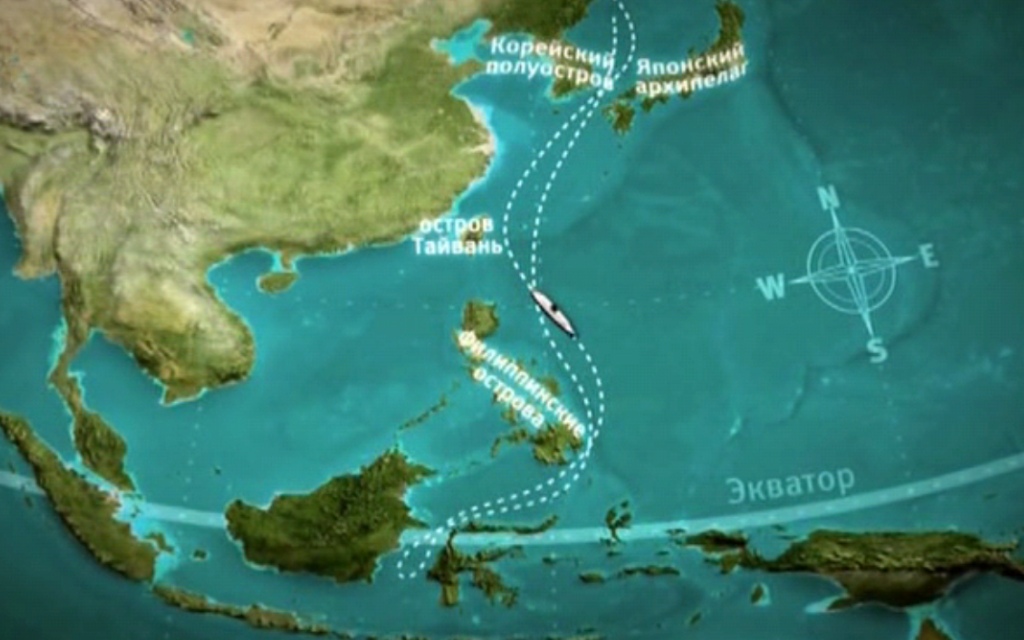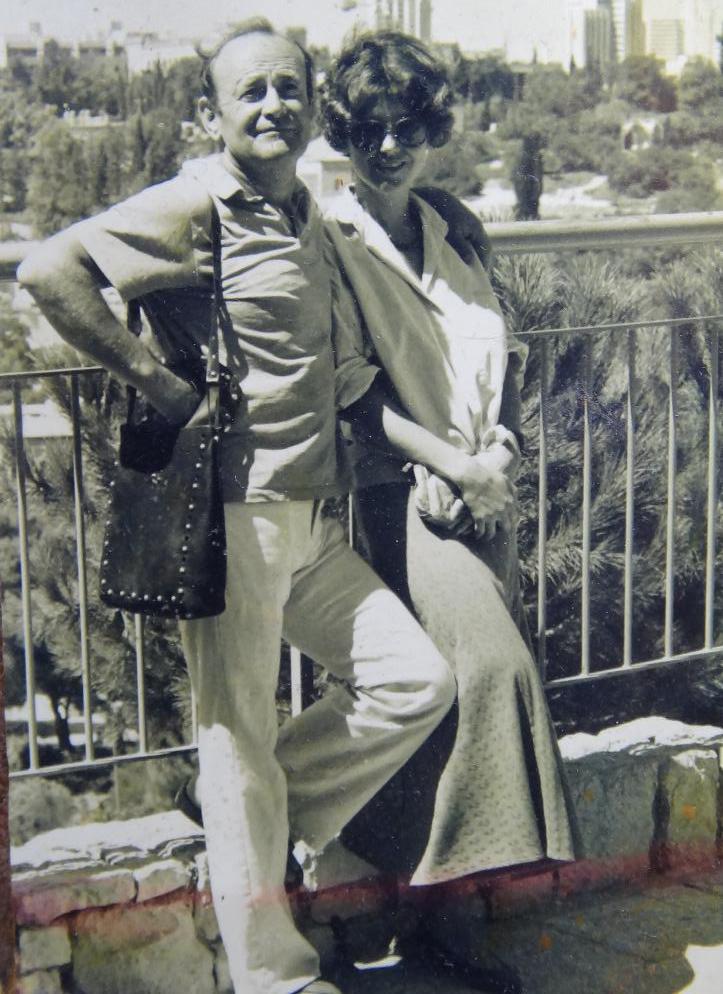On the eve of the New Year holidays, marking the arrival of 1975, sensational news came from across the ocean. Voice of America reported that a citizen of the USSR rushed into the stormy Pacific Ocean from the side of the ship. After nearly three days spent in the middle of the ocean, he went ashore in the Philippines. The Soviet media were silent. There was no news about the escape in the program “Glance” either.
“Voice of America” announced the name of the fugitive - Stanislav Vasilievich Kurilov. In response to inquiries to law enforcement agencies, concerned relatives received an answer: citizen Kurilov went missing in unclear circumstances. The escape was real, no one else doubted.
Curriculum Vitae
Glory Kurilov from an early childhood was a passionate dreamer. The boy who was born in the city of Ordzhonikidze five years before the war, and spent his childhood in Semipalatinsk, raved about the sea. He will later recall that all adults are “hopelessly land people.” The family of Stanislav Kurilov believed that his love of the sea would soon pass. At the age of ten, Slava crossed the Irtysh River - it is a deep river with many whirlpools and a strong undercurrent. Later, he without documents tried to get a young man in the fleet. The dream of young Glory Kurilov came true - he graduated from the Institute with a degree in Oceanology.
At first he wanted to become the captain of the ship, but the medical board at the university made an unambiguous conclusion: Kurilov should not be a sailor because of myopia. Desperate, he remembered that there was still a faculty of oceanology. After graduation, Stanislav Kurilov was a deep-sea swimming instructor, studied yoga, all tried to get permission to go on a business trip abroad, but he was stubbornly refused. Kurilov became restricted to travel abroad. The fact is that his sister lived abroad permanently. She married an Indian citizen and left with her husband first to his homeland, and then to Canada. But Stanislav Kurilov still had a dream to see this world.
Oceanologist Training
Twelve years after the sensational news, Israeli television broadcast a recording of the interview. A shy man with a disarming smile made one of the most desperate and daring escape from the USSR in the entire history of the country. This is truly an outstanding event. People used to try to escape behind the iron curtain, but not in such an unthinkable and even suicidal way. It was impossible to imagine that there would be a volunteer who would agree indefinitely to be in the middle of the Pacific Ocean, surrounded by sharks and fast sea currents. Stanislav Kurilov said that he was well prepared.
No training system guarantees that a person who decides on an extravagant act will survive and remain healthy. But Stanislav Kurilov still had a rather extensive experience of a long stay in and under water. And thanks to this experience, he was able to survive.
In 1968, tests were conducted in Gelendzhik Soviet submarine laboratory "Black Sea". The submarine allowed researchers to stay under water for several weeks and go to work to the bottom. Among the Chernomore testers was the Soviet oceanologist Slava Kurilov. Scientists in Gelendzhik tried to find out how the human body behaves in completely atypical conditions and what are the ultimate human capabilities.
Glory Kurilov took on the hardest work. Without natural light and under conditions of high pressure, he endured constant loads. Among his friends and colleagues there were many strong young guys who were not inferior to him in endurance and strength. But they could hardly have imagined such a craziness: a jump from the side of a huge passenger ship at full speed. The height of the ship "Soviet Union" could be compared with a nine-story building, its length - about two hundred meters. For more than a quarter century, the “Soviet Union” has been the largest airliner in the Soviet Union.
The liner "Soviet Union"
In encyclopedias, they did not write about the giant ship, they were limited to a few photos in the local press. The reason was that the ship was designed and built in Nazi Germany. His first name is “Albert Ballin”, although they say that in fact the liner was called after the Fuhrer himself.
The ship was built in Hamburg in 1922, in 1945 it was sunk. After the war, he was lifted from the bottom of the Baltic Sea and rebuilt at the East German shipyard. In 1957, under the familiar name "Soviet Union", the liner stopped at the new home port, in the city of Vladivostok. Passengers were struck by the decoration of the ship.
“Summer trip”
After the news about the escape of a Soviet citizen from the USSR’s largest cruise ship, the State Security Committee interviewed all the people who had some contact with Stanislav Kurilov. The repressions were so severe that even the girl who sold a citizen a plane ticket from Leningrad to Vladivostok, from where the Soviet Union ship departed, was punished. But while Stanislav Kurilov just caught the eye of an ad in the newspaper “Evening Leningrad”. Soviet citizens were invited to take part in the cruise "From winter to summer."
It was a cruise to the equator. There were more than two hundred tourists on the ship. The “Soviet Union” followed the equator without calling at foreign ports and back. The fugitive easily received a ticket. Passengers did not need visas; they were not going to protect them either. After all, where can passengers go if there is only the ocean for many kilometers? Imagine that someone could decide to jump from the side of the largest cruise liner, could not even experienced employees of state security agencies.
The future fugitive at first thought to buy a ticket to go on a cruise and explore the situation. The escape Stanislav Kurilov planned only for the next trip. He took neither a compass nor a map of the Pacific Ocean with him. In an interview, he told reporters that this was a completely spontaneous decision.
Aboard a liner
Three days after the ship left Vladivostok, passengers were already sunbathing on the deck in swimsuits. Stanislav Kurilov had not yet decided whether to make an escape this time or abandon this venture. He knew only the approximate route of the liner: from Vladivostok to the south along the Korean Peninsula, past the islands of Taiwan and the Philippines to the equator, and then approximately the same route back. Only when the Sea of Japan was left behind did he accidentally find a map indicating the route of the ship.

Not just a route was marked on the found map. Near the line of advancement of the ship even dates and times were indicated. Now Slava Kurilov knew exactly where and at what time the ship would sail. He understood that in the next flight (if it takes place) such luck would not be there anymore. Kurilov calculated that he could leave the liner only at two points on the way. Both of these points were near the Philippines. He knew that the Philippines was a zone of influence of the United States. If he swims, then he will not be returned back, because the Cold War is in full swing. But he also knew that the Southern Philippines at that time was a zone of internal military conflict. Local rebels launched a powerful battle against government forces. But Stanislav Kurilov was not afraid of danger.
Escape from the USSR
On the night of December 13, 1974, Stanislav Kurilov escaped. Calculating the optimal time, he jumped from the stern into the water. There should have been about ten nautical miles to the coast. But the next morning he did not see the outline of the earth on the horizon. Then Stanislav Kurilov did not yet know that he had to spend two days and three nights in the ocean without food, water and rest. By the evening of the second day he managed to make out the land, but the fugitive was carried to the south by a strong sea current. The same current carried him to a reef on the southern side of the island. On December 15, 1974, Stanislav Kurilov managed to reach the coast of the island of Siargao.

On the shore of a Soviet citizen, a local fisherman with children was picked up. He reported this to the authorities. First, Stanislav Kurilov was arrested. He spent almost a year in a local prison, but he enjoyed quite a lot of freedom. From time to time, the head of the prison took him with him to drink in a local tavern. A year later, Kurilov was able to obtain official confirmation that he is a refugee. He was finally able to leave the Philippines. But when the USSR found out about this, the state security organs tried in absentia Kurilov and sentenced to ten years in prison for treason.
A dream come true
Stanislav Kurilov described his impressions and biography in the book "Alone in the Ocean", which was translated into many languages. On the craziest escape, the journey did not end. What is only worth a year in a Philippine prison. Then, having received a Canadian passport, the former Soviet citizen went to Honduras, where he was kidnapped by mafiosi. He had to get out of the terrible captivity on his own. In Canada, he first got a job in a pizzeria, and then engaged in marine research. He worked at the North Pole, studied the ocean at the equator, and searched for fossils from the Hawaiian Islands.
In the book "Alone in the Ocean" Stanislav Kurilov outlined the most interesting story of his life. In 1986, he married and moved to Israel with his wife.
A fugitive from the USSR tragically died on January 29, 1998. The day before his death, in Bible places on the island of Galilee in Israel, he pulled out a colleague and friend from the network. He was then 62 years old. The next day, Stanislav Kurilov, while diving, became entangled in the same networks himself and developed all the air. When Kurilov was carried ashore, he could no longer be saved. Soviet fugitive buried in Jerusalem.